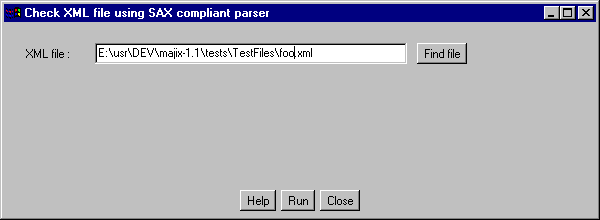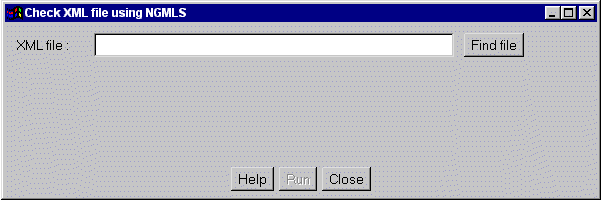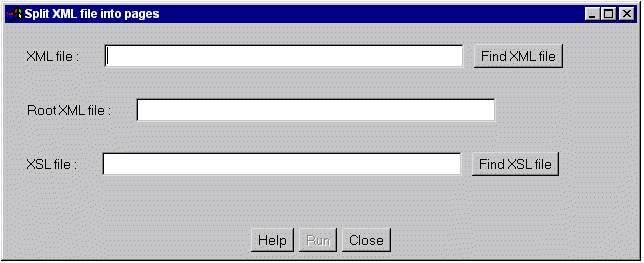
Majix Light 1.1


|
Majix Light 1.1 |

|
|
|
||
|
|
|
The toolsMajix provides direct access to a set of auxiliary tools. The list of these tools is made available by using the "tools" button in Majix main window. This dialogue box will appear:

The following tools are provided:
Editor of the configuration fileAn interactive tool is provided to edit the configuration file (see the section Editing the configuration file). XML parsing using a SAX compliant parserThis tool checks a XML file using a SAX compliant parser. The default parser is James Clark's XML parser written in Java called XP, but you can change the parser by specifying its class in the configuration of Majix (see the Editor of the configuration file). This tool is always available.

XML parsing using nsgmlsThis tool checks a XML file using James Clark's XML and SGML parser nsgmls. XML checking using nsgmls is much more thorough than with XP. However, due to its size, nsgmls is not provided with Majix installation. To use nsgmls from Majix, you need to:

Application of a XSL stylesheet using XTAs described in "Browsing XML documents", you can transform XML into HTML or XML conforming to another structure using XT, driven by a XSL stylesheet.

Splitting of an XML fileConverting a big Word file into XML provides a big XML file. Applying an XSL stylesheet to that XML file will build a big HTML file, where it is often better to limit the size of individual HTML files destined to be downloaded on the web. A small tool is provided with Majix which will split a XML file conforming to mydoc.dtd into a set of smaller XML files. Note: this has been developed to produce the downloadable version of the documentation of Majix, and is not a general-purpose XML splitter. More precisely, the splitter tool will:

|
|
Copyright TetraSix, 1999 - info@tetrasix.com |